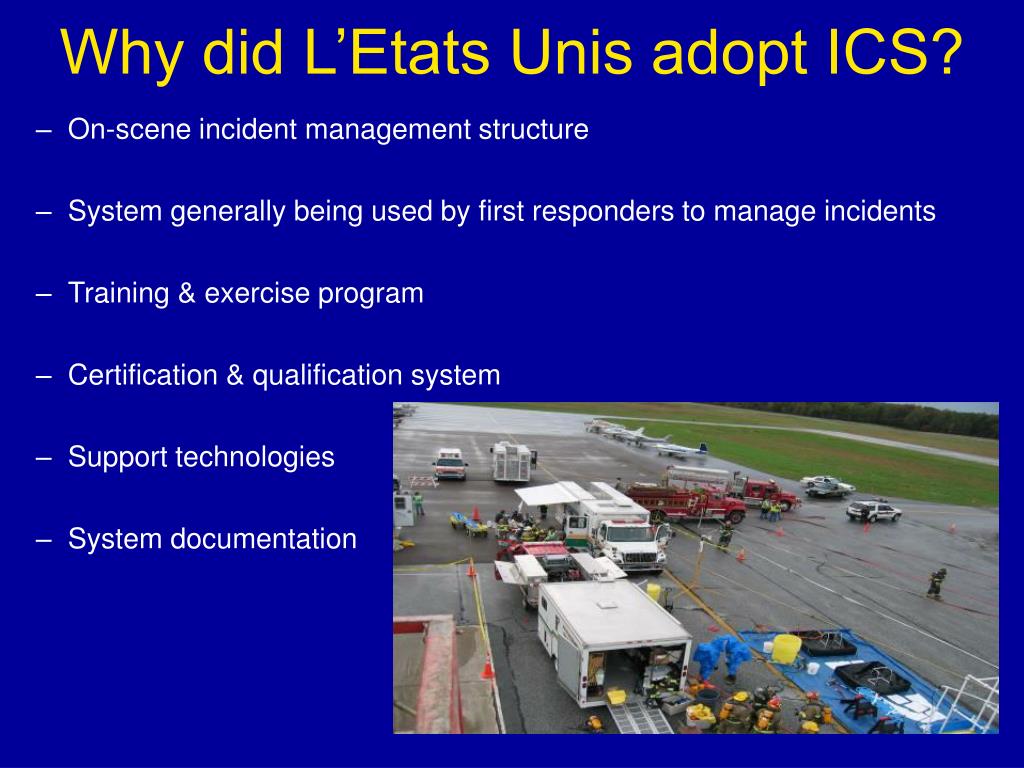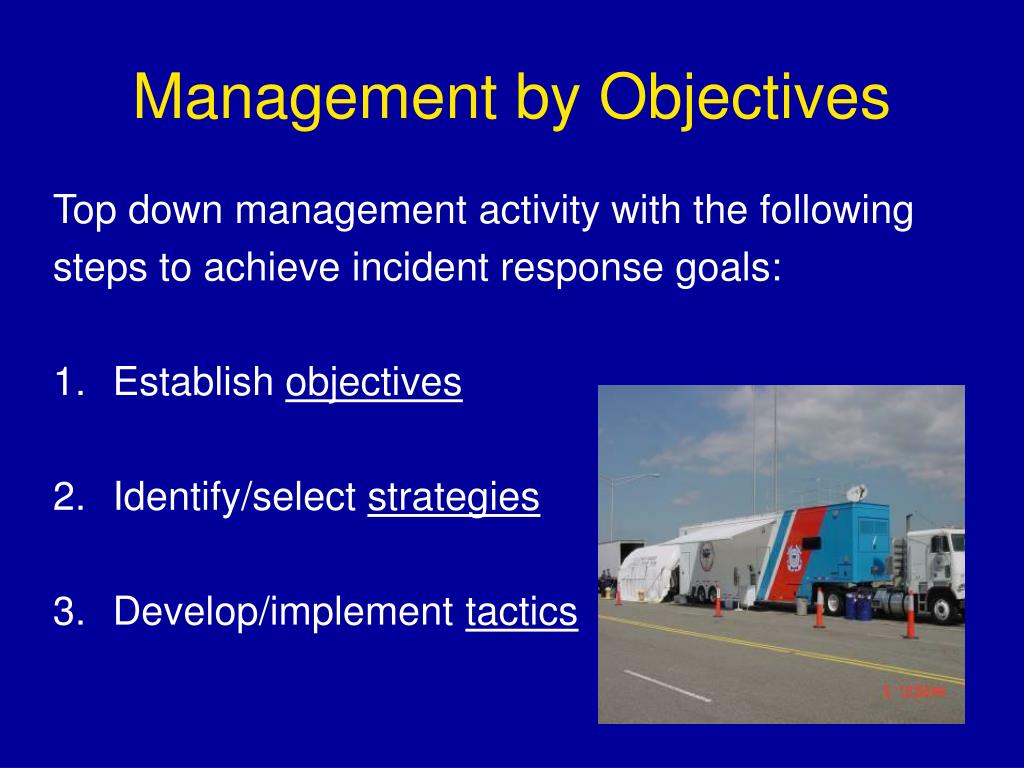

This flux in incident and response conditions is best managed using a deliberate planning process that is based on regular, cyclical reevaluation of the incident objectives.

Because event parameters and the status of the components of an asset will change, incident objectives will have to change as the response evolves. These overarching "control objectives" are further qualified by establishing measurable and attainable objectives for each operational period, and by defined strategies and tactics. For any response of more than a few hours, management should transition to a method of proactive response by establishing incident-wide objectives.

Assignments with individual assignment objectives and operating parameters.Response goals, objectives, and strategies.Adequately disseminates information, including the following, to achieve coordination throughout ICS:.Defines incident operational period objectives (measurable steps that contribute to reaching the goal) and strategies to meet the defined objectives.To any single operational period (thus distinguishing them from operational period objectives). Establishes incident goals (where the system wants to be at the end of response these are referred to as "control objectives" in NIMS).Activates the system and defines the incident response structure.The incident command process describes an ordered sequence of actions that accomplishes the following: 1.4.3 Incident Command Versus Incident Support.1.4.1 1ncident Command versus Regular Administration of an Organization.


 0 kommentar(er)
0 kommentar(er)
